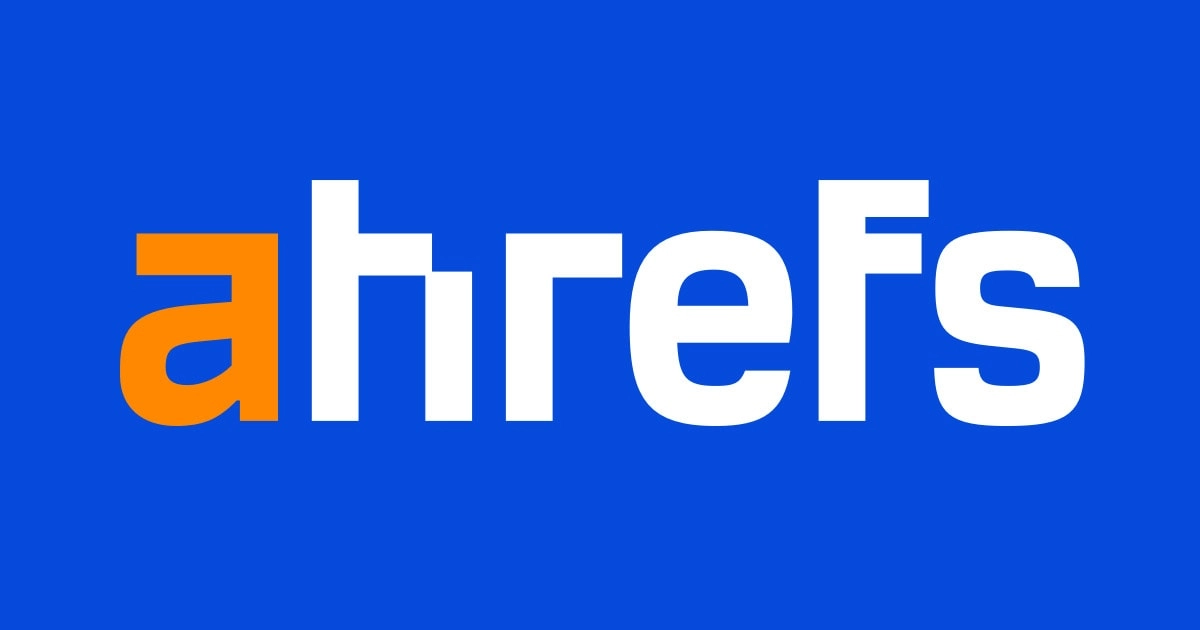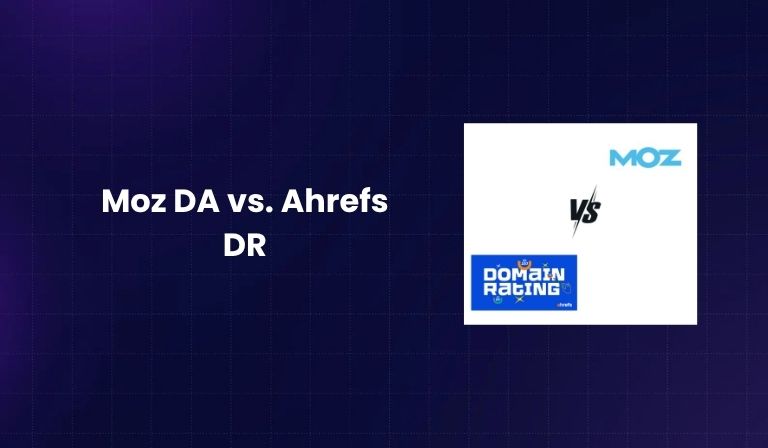In the ever-evolving world of SEO, it’s no secret that authority matters. But how exactly do we measure the authority of a website? Since Google doesn’t publicly share the exact metrics it uses to rank pages, SEO professionals have developed third-party benchmarks to estimate a website’s potential in search engine results.
Two of the most trusted metrics in the SEO toolkit are Moz Domain Authority (DA) and Ahrefs Domain Rating (DR). While often used interchangeably, they are distinctly different in how they’re calculated, what they represent, and how they should be interpreted.
In this post, we’ll dive deep into the difference between Moz and Ahrefs domain ranking, explain what Ahrefs domain authority and Moz DR really mean, and show you how to use these tools responsibly to grow your website.
Why Metrics Like DA and DR Exist (and Why They’re Flawed)
Let’s start with the “why.” Google doesn’t provide a public score for how much it trusts a website. That’s where third-party tools like Moz and Ahrefs step in. They attempt to replicate Google’s perception of a site’s trustworthiness through algorithms that estimate ranking strength.
But here’s the catch: these scores are based on each company’s own crawlers and data sets — which aren’t perfect. That’s why SEO professionals often say, “Take them with a grain of salt.”
Grains of Salt Visual Metaphor: Like salt in cooking, these metrics should enhance your SEO strategy, not overpower it. Relying solely on them can lead to misguided decisions.
Moz Domain Authority (DA): What It Is and How It Works
What is Domain Authority (DA)?
Developed by Moz in 2004, Moz Domain Authority is a predictive metric that estimates how well a website is likely to rank in Google’s search engine result pages (SERPs). It’s calculated using over 40 different factors, including:
-
The number of linking root domains
-
The total number of backlinks
-
Link quality and spam score
-
Domain age and website size
Moz’s algorithm outputs a score on a logarithmic scale from 0 to 100, with higher scores indicating a stronger likelihood of ranking.
How Has DA Evolved?
Over the years, Moz has updated its algorithm to increase reliability:
-
2011: Introduction of Linking Root Domains, which meant repeated links from the same domain counted less
-
2015: Integration of machine learning to better identify spammy links and prevent manipulation
Today, Moz DA is widely used for link-building strategies, competitive analysis, and evaluating site strength.
How to Increase Your Moz DA
Build High-Quality Backlinks
Get backlinks from reputable websites in your niche. Focus on do-follow links to pass link equity or “link juice.”
Visual: Link juice carton
Improve On-Page SEO
High-quality content, clean URL structures, meta tags, and internal linking contribute to authority.
Remove Toxic Backlinks
Regularly audit your backlink profile and disavow spammy or irrelevant links.
Boost Social Media Engagement
Increased brand visibility can lead to more natural backlinks and authority.
Use Internal Linking Strategically
Distribute link equity across your site by connecting relevant, high-value pages internally.
What Is a Good DA Score?

-
50–60: Good
-
60+: Excellent
However, DA is a relative metric. Don’t just aim for a high score in isolation. Instead, compare your DA to competitors in your niche.
Example: thehoth.com has a DA of 61. That’s strong — but only meaningful when compared to industry peers.
How Moz DA Affects SEO
Here’s the twist — DA does not directly impact SEO rankings.
Think of it like a quarterback’s rating in football. A rookie can still outperform a veteran in the right game. Likewise, a website with low DA might still outrank competitors for specific keywords thanks to excellent content, technical SEO, or niche relevance.
Visual: Football quarterback analogy
Ahrefs Domain Rating (DR): A Look Under the Hood
What is Domain Rating (DR)?
Ahrefs Domain Rating, often mistakenly referred to as Ahrefs domain authority, measures the strength of a website’s backlink profile. Introduced in 2016, it’s calculated based on:
-
Number of unique referring domains
-
Authority of those domains
-
Distribution and quality of backlinks
DR also uses a logarithmic scale from 0 to 100, making it harder to climb higher as your score increases.
How to Improve Your Ahrefs DR
-
Create High-Quality, Shareable Content
This encourages natural backlinks over time. -
Secure High-Authority Backlinks
Use guest posting, outreach, and digital PR. Or partner with white-label providers like The HOTH. -
Audit and Improve Existing Backlinks
Eliminate low-quality links that could dilute your authority. -
Optimize Your Site Internally
Even off-page scores like DR benefit from excellent content and site structure. -
Track Your Progress
Ahrefs updates DR regularly — monitor changes and refine your strategy accordingly.
What’s a Good DR Score?
-
50+: Strong
-
60+: Excellent
Just like DA, Ahrefs DR is best used to compare against competitors within your industry.
Visual: thehoth.com DR rose from low 50s in 2018 to 75 by 2023
How DR Impacts SEO
DR is not a direct ranking factor, but it does correlate with stronger backlink profiles, which are a crucial element of SEO.
Example: The HOTH ranks above Google.com for the keyword “google rank website” — despite Google having a far higher DR. Why? Because content relevance and keyword optimization still matter more.
DA vs. DR: What’s the Real Difference?
DA (Moz) vs DR (Ahrefs)
| Feature | Domain Authority (DA) | Domain Rating (DR) |
|---|---|---|
| Developed By | Moz | Ahrefs |
| Measures | Overall site authority | Strength of backlink profile |
| Based On | 40+ factors including links, domain age | Number and quality of backlinks |
| Scale | 0–100 (logarithmic) | 0–100 (logarithmic) |
| Updates | Periodic algorithm updates | Near real-time |
Similarities Between Moz DA and Ahrefs DR
-
Relative Scores
Both are relative to the tools’ datasets. A major site gaining backlinks (e.g., Facebook) can reduce other sites’ relative scores. -
Logarithmic Scales
Moving from 20 to 30 is easier than going from 70 to 80. -
Not Direct Ranking Signals
Google does not use these scores in its algorithm — they are proxies, not inputs.
How These Metrics Are Calculated
Moz DA
Uses machine learning and 40+ link-related signals to predict ranking potential.
Ahrefs DR

Focuses primarily on the strength and diversity of referring domains.
Visual: Yellow truck with open hood
Using DA and DR in Your SEO Strategy
-
Competitor Analysis: Compare scores across domains in your space.
-
Link Prospecting: Use DA/DR to evaluate the value of potential backlinks.
-
Campaign Tracking: Monitor your scores over time to measure impact.
Limitations of DA and DR
-
Not comprehensive: They don’t measure content quality, UX, or engagement.
-
Subject to change: A shift in another website’s backlink profile can affect your score.
-
Can mislead: Don’t obsess — they’re just pieces of the SEO puzzle.
Beyond DA and DR: What Else Matters?
While Ahrefs domain authority and Moz DR provide valuable benchmarks, here’s what else to track:
-
Organic search traffic
-
Keyword rankings
-
Bounce rate and dwell time
-
Content quality and engagement
-
Technical SEO factors
Tip: The most meaningful signal Google gives us is traffic. If Google is sending traffic to a site, it likely trusts that site.
FAQs
Are Moz Domain Authority and Ahrefs Domain Rating the same thing?
No. While both estimate website authority, they are calculated differently using distinct methodologies.
Is a higher DA or DR always better?
Not always. These scores should be viewed relatively, not absolutely. A DR of 40 might be great in a niche with little competition.
Can I improve my DA and DR at the same time?
Yes. Quality backlinks and optimized content positively affect both scores.
Are Moz Domain Rating and DA the same?
No — Moz DA is the correct term. Moz Domain Rating is often a mistaken phrase, but Moz refers to it strictly as Domain Authority.
Is Ahrefs Domain Authority real?
Ahrefs doesn’t have a metric called “domain authority.” It’s often confused with their Domain Rating (DR).
Conclusion
Domain Authority and Domain Rating are valuable, but they are not the ultimate truth in SEO. Real growth comes from:
-
Creating valuable, optimized content
-
Building a strong backlink profile
-
Understanding your niche competition
-
Prioritizing user experience and intent
Being a great SEO means understanding tools like Moz domain rating and Ahrefs domain authority, but knowing when to look past the numbers.

